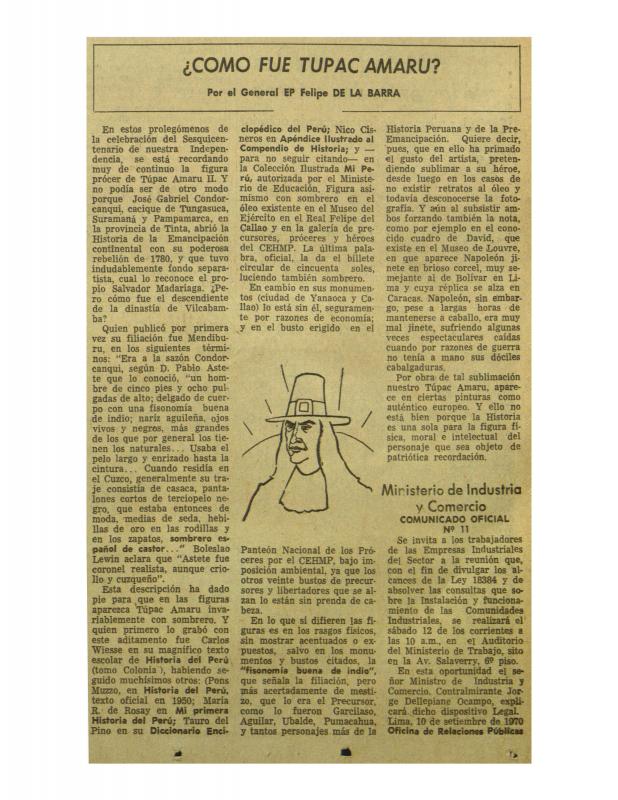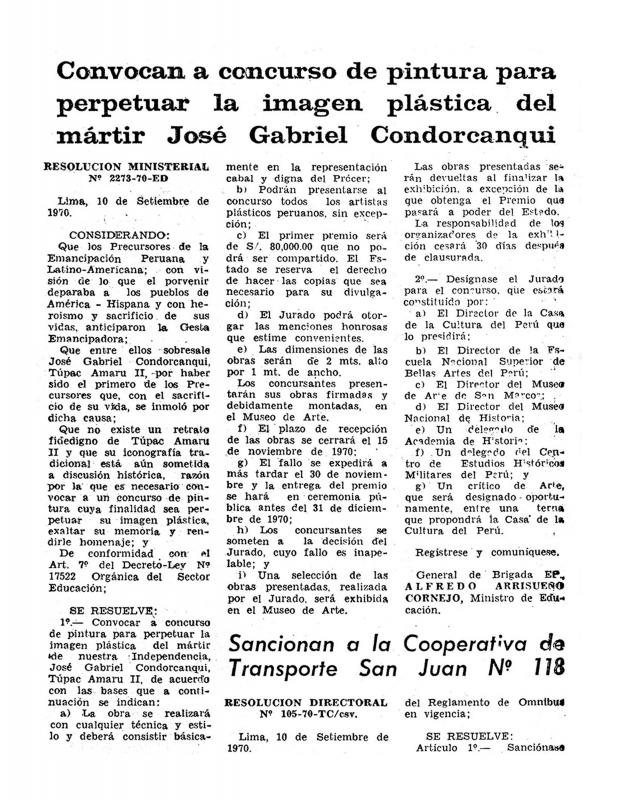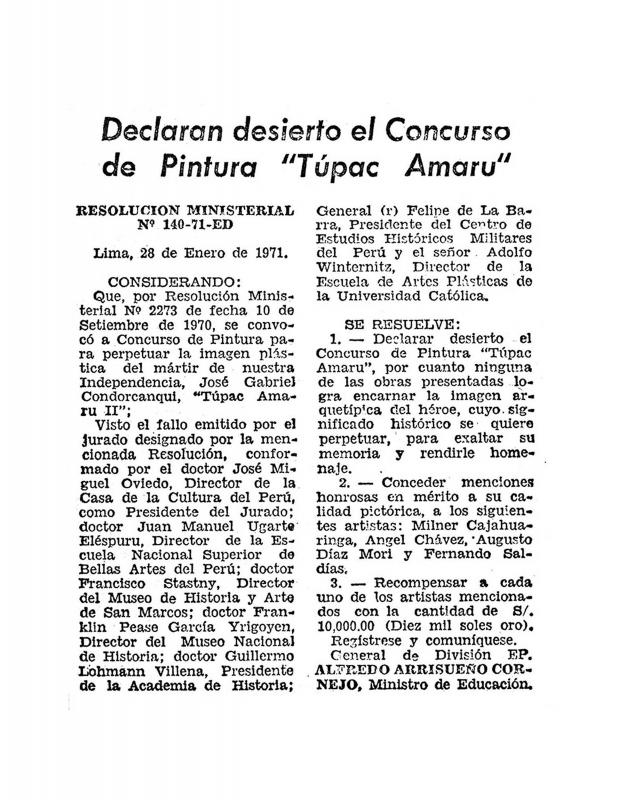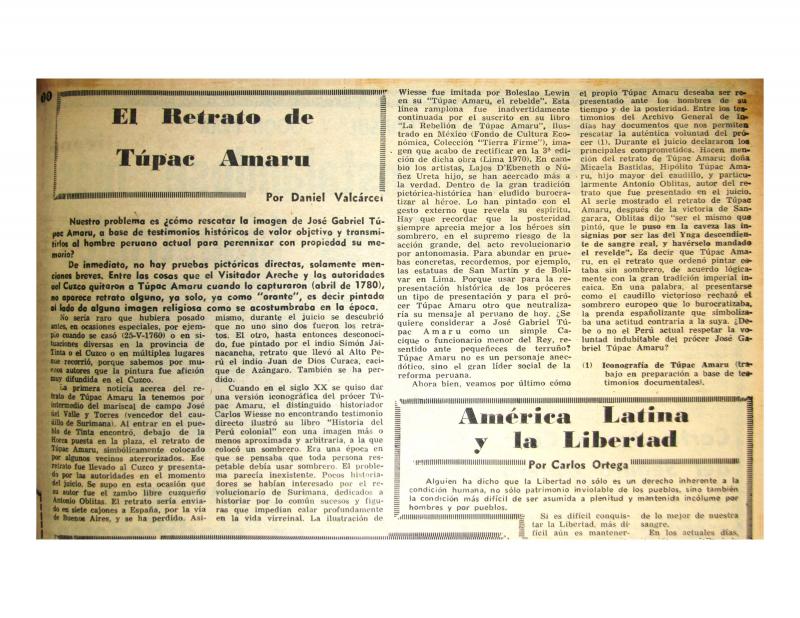This article appeared on the front page of El Peruano, the official government instrument [of communication] that marked the beginning of one of the most controversial and eventful competitions of the 1970s, launched on three separate occasions and declared void every time. A fourth attempt resulted in the awarding of the prize to the academic sculptor Joaquín Ugarte y Ugarte (1917–84), however, his equestrian statue was never installed in the Plaza de Armas. Some criticized the incongruity of placing the statue in that colonial environment. Nothing ever came of Decreto Ley 18280, the law that created a competition to design a statue of the indigenous hero and install it in the Plaza de Armas. The monument was actually erected in a new plaza created especially for the purpose. The law also decreed that a portrait of Túpac Amaru was to be placed in all educational institutions; this led to a simultaneous effort to create a painting contest, but it too never came to anything.
José Gabriel Condorcanqui, Túpac Amaru II (1738–81), was an Inca chieftain who, in 1780, led the rebellion of the Andean people against the Spanish Empire. After languishing in the relative obscurity of traditional Peruvian historiography, his image was appropriated by the self-styled Gobierno Revolucionario de las Fuerzas Armadas during its first phase (1968–75), a time when the government was pioneering social reforms and exploring the use of icons as symbolic expressions of the regime and its aims.
[As complementary reading about Túpac Amaru II, see the following articles in the ICAA digital archive: by General EP Felipe de la Barra “¿Cómo fue Túpac Amaru?” (doc. no. 865441); (unattributed) “Convocan a concurso de pintura para perpetuar la imagen plástica del mártir José Gabriel Condorcanqui” (doc. no. 865422); by Alfredo Arrisueño Cornejo “Declaran desierto el Concurso de Pintura ‘Túpac Amaru II’” (doc. no. 865498); (unattributed) “En busca de la imagen arquetípica de Túpac Amaru” (doc. no. 865702); by Daniel Valcárcel “El retrato de Túpac Amaru” (doc. no. 1052165); and by A. O. Z. “Túpac Amaru: ¿verdadero retrato?” (doc. no. 865460)].






